Power of Data Visualizationn reposted a Bonkers World item:
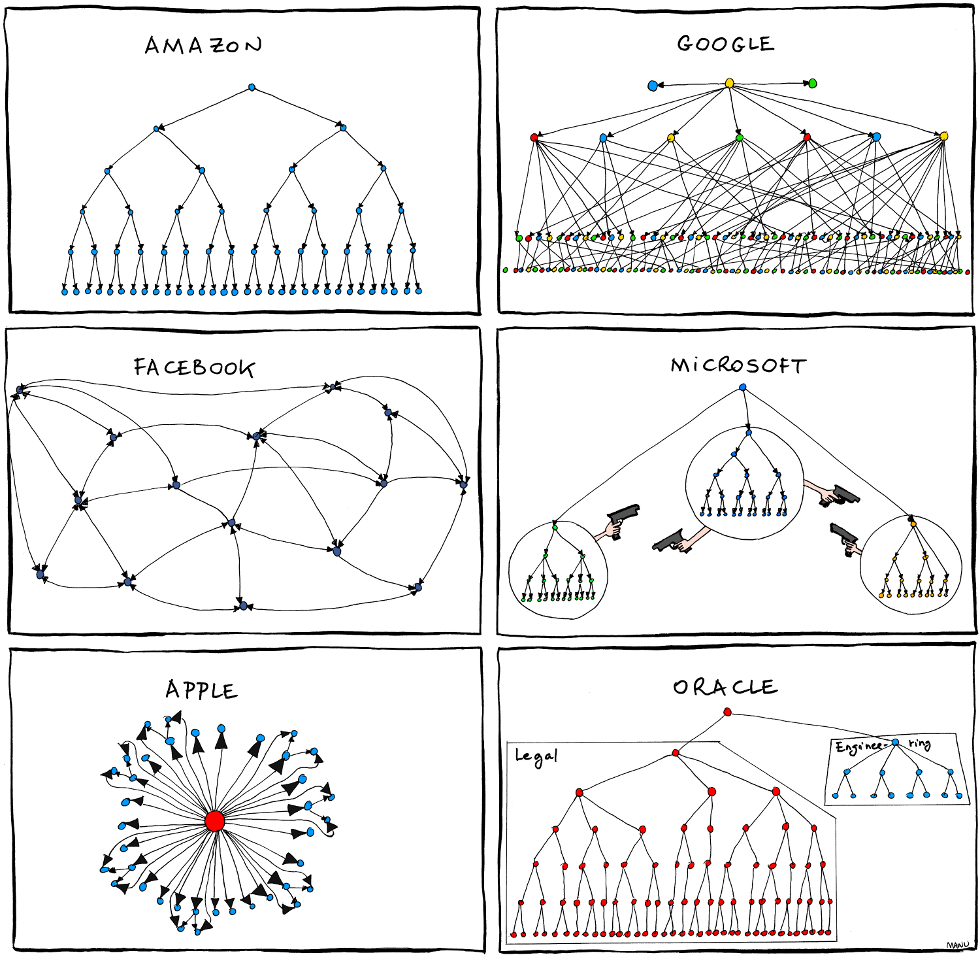
… The comments to the original post are not really deep thoughts. Perhaps because of the close resemblance between the drawings and the expected outcome. Nevertheless interesting and funny!
research blog supporting instantdebriefing.com
Power of Data Visualizationn reposted a Bonkers World item:

… The comments to the original post are not really deep thoughts. Perhaps because of the close resemblance between the drawings and the expected outcome. Nevertheless interesting and funny!
In the Labyrint (vpro, dutch) episode about ‘power of the masses’, some interesting issues surface.
The episode refers to scientific experiments about the power of a both big and small groups to influence and steer individual opinions and responses; describing ‘I vote exactly like the othershink, even when I know I was right‘ and ‘I vote exactly Iike I think others would or think I should’. Examples are given of people influencing people and robots influencing cockroaches. A high degree of acceptance through social or physical recognition seems an important factor necessary for this influence to occur.
How can this knowledge be used to bring groups together in generating and sharing solutions in complex situations? With (exploiting) or without (repressing) ‘fake, dishonest personal rationalisation of personal, individual behavior’.
We – humans – are suggested to feel safe within groups borders. Because of are social group survival skills. Let’s extrapolate on this: what if today, we have become our own predators? It is not hard to imagine a species at the top of one of the foodchains on this earth, we more or less only have boosted ‘in-species’ competition. Coexisting with group safety there is individual (and group) competition. Perhaps we’ve learned to cannibalise socially. I am curious how Frans vd Waal would respond to this statement.
After watching the video below (vpro, belgian) to the end, we can ask ourselves whether -the concept of- group safety is a driver for our behavior or simply an emerging result due to our evolved individual ability to ‘physically read’ social signs.
I’ll be focussing on smaller groups. A light introduction to mass behavior – from a marketing perspective – is available at ‘the herd’ by Mark Eals.
Competition versus cooperation
How can visualization help us grasp the nature of our complex relationships?
Visualization, what makes it work and does it relate to how we tick
“Graphics have an advantage over language in expressiveness (Stenning & Oberlander, 1995); graphics use elements and relations in graphic space to convey elements and relations in real or metaphoric space. ” [the cambridge handbook of thinking and reasoning , 2004, Chapter 10, Visuospacial reasoning, by Barbara Tversky ]
Compared to text, static -non interactive- visualizations of a complicated (and not complex) business strategy prove that when ‘information is communicated through conceptual visualization, the user has a more positive emotional response, which in turn makes the cognitive response more positive’.
Complex systems – Whether drawing a map in the sand or designing an pipeline system of an airplane, visualization helps us explain and understand. Interactive visualization has a positive effect on knowledge sharing activities, regarding to productivity, quality of outcome and knowledge gains [The benefits of synchonous collaborative information visualization: evidence from an experimental evaluation, 2009, S. Bresciani, M.J. Eppler] It is unclear if the same goes for visualizing the understanding of complex systems, like understanding a juridical system, deciding about distribution of aid, developing water management, or marketing converging Universities of Technology.
Constructive (/ productive / functional) conflict – There are examples of successful implementation of visual tools in decision making. Dimicco states …. {oude stuk kopieren}.
Mengis and Eppler [Seeing versus arguing, the moderating role of collaborative visualization in team knowledge integration, 2006, J. Mengis, M.J. Eppler] state that ‘conversers who interact without an interactive visual support … do not manage to deal constructively with conflict’. They quote Bregman and Haythornthwaite [A. Breman C. Haythornthwaite, Radicals of presentation in persistent conversation, 2001] that concersations are ephemeral, concluding that ‘the major reasons and motivations behind the decisions taken stay often poorly documented’. Mengis and Eppler conclude that thier visualization tool improves decision making, with (a) an increased weight of the constructs ‘Big picture’ and ‘Common ground’ and (b) a decreased weight of the constructs ‘Balanced participation’, ‘Task conflict’ and ‘Relationship conflict’:
… we can say that without an interactive visual support {they} struggle more to integrate their knowledge: they lack common ground and the big picture in the conversation and therefore give more importance to equal participation and conflict.
They also state that interactive, realtime visualization makes conversers taking content criticism less personally.
This research focusses on expert-decision making interaction. One of the stated reasons for success is that visualization helps to depersonalize conflict and emphasizes common ground and the big picture. According to Mengler et al. visualization supports knowledge integration through a set of three conflict characteristics: (1) a moderate level of content {/ cognitive} conflict, (2) a low level of relationship {/ affective} conflict and (3) a low correlation between (1) and (2).
Kurtz and Snowden [Bramble bushes in a thicket, narrative and the intangibles of learning networks, ????, C.F. Kurtz, D.J. Snowden] mention a third type of conflict described in literature besides cognitive and affective conflict, and that is process conflict. According to Kurtz et al. several authors found only cognitive conflict to be helpful for group performance. They also state that real life emphasis on only one of these types is dangerous.
Shared behavioral cooperative norms can help balance out (emphasis on) cognitive conflict, expressed in terms of openness and mutuality. Openness and mutuality emerge when groups maximize cognitive conflict and minimize affective conflict [The effects of conflict on strategic decision making effectiveness and organizational performance, 1997, A.C. Amason and D.M. Shweiger].
Further Alper et al.’s ‘conflict efficacy’ is found to be useful – quoted by Kurtz and Snowden: ‘it says that conflict should not be measured by its nature or origin, but by its contribution to the perception among group members that conflicts can and are dealt with productively’. In other words: being confident helps a group overcoming conflict.
Finally interorganizational networks are explained as being a source of both new knowledge and of productive conflict ‘that improves the organisation’s ability to reinvent itself from within’.
Hidden motivations – Conversations are mostly ephemeral [{lezen!} Radicals of presentation in persistent conversation, 2001, A. Bregman, C. Haythornthwaite], leading to poorly documented reasons and motivations behind the decisions.
It would be interesting to determine the role of visualization in overcoming this ephemeral character, without giving in to time or capacity restrictions, when dealing with an ‘Organizational Backbone’, for instance during a situation of civil service resistance.
Risks of visualizations –
{piece eppler}
{blogpost pvp analysis/communication} Exploring data sets and communicating your findings are two different activities. Typically, the same visualization approach does not suit both, because (a) exploratory visualizations are too complex to communicate and (b) communicative visualizations cannot be created until data is explored. There seems to be a gap between ‘analysis before communication’ and ‘communication before analysis’.
{slide pvp dataporn}
Supporting the narrative –
{bramble bushes, kurtz & snowden}
Intention and interest and influence
{still reading about: undermine unhelpful believes and attitudes: mental imagery and implicit memory}
Competition versus cooperation
How can visualization help us grasp the nature of our complex relationships?
Oxford dictionary (pdf):
Competition
[mass noun]
the activity or condition of striving to gain or win something by defeating or establishing superiority over others
[count noun] an event or contest in which people take part in order to establish superiority or supremacy in a particular area
[in singular] the person or people over whom one is attempting to establish one’s supremacy or superiority; the opposition
Ecology; interaction between animal or plant species, or individual organisms, that are attempting to gain a share of a limited environmental resource.
Cooperation
[mass noun]
the action or process of working together to the same end
assistance, especially by complying readily with requests
Economics; the formation and operation of cooperatives.
Collaboration
[mass noun]
1 the action of working with someone to produce something
[count noun] something produced in collaboration with someone
2 traitorous cooperation with an enemy
Intention
[noun]
1 a thing intended; an aim or plan
[mass noun] the action or fact of intending
(someone’s intentions) a person‘s plans, especially a man’s, in respect to marriage
2 Medicine; the healing process of a wound
3 (intentions) Logic; conceptions formed by directing the mind towards an object.
Interest
[noun]
1 [mass noun] the feeling of wanting to know or learn about something or someone
the quality of exciting curiosity or holding the attention
[count noun] an activity or subject which one enjoys doing or studying
2 [mass noun] money paid regularly at a particular rate for the use of money lent, or for delaying the repayment of a debt
3 the advantage or benefit of a person or group
archaic the selfish pursuit of one’s own welfare; self-interest.
4 a stake or involvement in an undertaking, especially a financial one
a legal concern, title, or right in property.
5 (usually interests) a group or organization having a common concern, especially in politics or business
Loyalty
[mass noun]
the quality of being loyal
[count noun] (often loyalties) a strong feeling of support or allegiance
Conflict
a serious disagreement or argument, typically a protracted one
[mass noun]
a prolonged armed struggle
[mass noun] a state of mind in which a person experiences a clash of opposing feelings or needs
a serious incompatibility between two or more opinions, principles, or interests
Competition versus cooperation
How can visualization help us grasp the nature of our complex relationships?
Conflicts of interests: about the advantage or benefit of a person or group and loyalties:
When cooperation and competition co-exist there is a conflict of interests. People differentiate their interests over different perspectives. For instance the perspective of time (a), space (b) and decision making unit (c) {aka <organisatiegrootte><zoom level>}.
Assuming the example of the three Universities of Technology (UoT’s) in the Netherlands is spot on, deeper coexisting levels appear when peeling the union of interests. In general, universities need to play parallel multi-interest games of cooperation at some levels and of competition at other levels. Let us zoom into those levels from the perspective of the UoT.
(a) Differentiation over time:
Level of perceived history. Just like Delft and pottery go hand in hand since 1650, also Eindhoven and Philips do since 1891. Upon today the history of traditions and industry, still reflects upon the reputation and therefore the perceived value of each University.
Level of short term goals. Each year all UoT’s are competing in attracting enough students and in attracting the best students, to secure financial needs and stimulate growth.
Level of long term goals. All three UoT’s have joined forces in the 3TU.Federation, focusing on two main aims: Facilitation & Standardization and shared services. This is a high performing kickoff to boost efficiency, together with a high reliability strategy increasing (inter)national effectiveness.
Level of timing (1): It seems easier to collaborate with other universities that are in the same stage of development, resulting in new institutes like the School for Technology Design; the Sten Ackerman Institute.
Level of timing (2): Deploying one strategy seems fruitfull to time commitments and recources. For example, the Delft University could merge with two other dutch technical universities and / or could also merge with two other non-technical universities, more or less planned in the same timeframe.
Level of timing (3): Sometimes governmental decision making is synchronous to operational or strategic activities. Sometimes it is not in sync. It then disrupts planned developments or recently activated activities.
Differentiation over time asks us: How to deal with interests that are labeled with a time perspective, when -at the same time- acting on interfering interests that are based other time perspectives?
(b) Differentiation over space <zoom level of a system>:
Level of location: Every University is developing it’s own campus. Local, regional and national government play their roles in the development of housing, public transport, infrastructure, business parks e.g.
Level of sources: Approximately until 2000 all 3 UoT’s were strongly competing for sources (students, funding). Today, the organizations are learning to align their activities and to combine their sources. By doing so they start strengthening the collaborative impact across national borders, not only within Europe but also world wide.
Level of borders: Valorization Centers of the UoT’s may have regional oriented business goals in collaboration with public regional interests, conflicting with the intended cooperation of 3TU.Federation.
Level of reach: Delft is not only aligning with other dutch technical universities on a national level, but also with other regional non-technical universities on a regional level (Leiden+Rotterdam). Both for reaching out to attract foreign talent and growth perspectives, from an international perspective.
Differentiation over space asks us: How to deal with interests that originate from within one region, when -at the same time- acting on interfering interests outside that region?
(c) Differentiation over <organisatie grootte> decision making unit:
Level of the individual: The interests of a Rector Magnificus may differ from those of a library employee or a student. They may however share an individual sense of pride or loyalty belonging to the same group.
Level of the individuals: Due to a bachelor/master system, students themselves can find best fitting paths. Standardization needs cooperation, but in this case also leads to new competition.
Level of a group / team: Within a board of decision makers, there is a delicate balance between agreement on some issues and disagreement on others.
Level of a Group / organization: Within each university different service departments or faculties could experience internal competition. This can lead to civil service resistance within an organization during – for example – reorganization.
Level of a GROUP / : Does the organizational model still fit todays organization, for instance when collaboration with self employed persons becomes standard practice or when the lifespan of research outlives public or commercial principals or assignments?
Differentiation over decision making unit asks us: How to deal with interests loyal to one group level, when -at the same time- acting on interfering interests at different group levels?
The examples describing the differentiation of interests tend to overlap now and then. They all deal with history, context and dynamics of a group. All levels of differentiation ask us how to deal with interfering interests and conflicting loyalties.
NOTE: read more about this example: background insights (here) and additional developments (here, last two paragraphs).
Does sharing these interests support Group decision making? And if so, how can we prioritize these interests of individuals and groups and how can we communicate these priorities of interests?
There are several tools/ methods/ techniques delivering visual support for decision making. A nice overview is this periodic table of visualization.
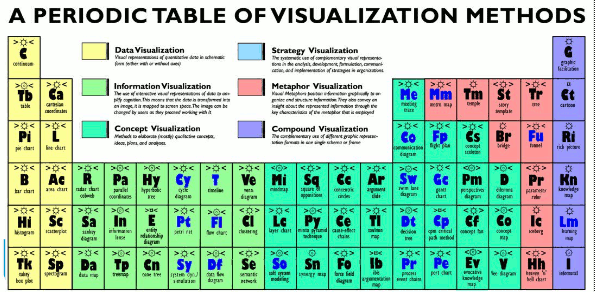
There are visuals that unravel arguments by using diagrams, and those that combine arguments by embedding them in a story. In my opinion, both types can help both explain and fend of arguments.
Let’s examine a some diagram types, as a warming up before discussing the potentional and impact of working with visualizations in complex situations.
The method of argument mapping (i.e. De argumenten kaart) delivers a visual overview using lists framed within the limits of an A3-paper.
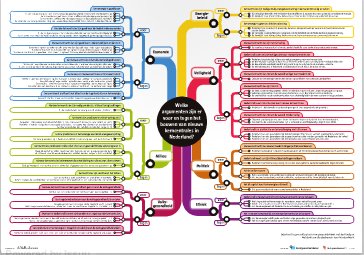
Relations between arguments stay unclear. The tooling of debategraph tries to make these relations comprehensible by adding some interactivity, for instance by using different views of the same information.

So when are we talking about argument infographics and when about argument maps? This is what Tim van Gelder mentions at his blog.
Another example, using a fixed layout, is the business model canvas based on The Business Model Ontology – A Proposition In A Design Science Approach. Available for ipad as well. Nice first steps.Unfortunately no support for realtime collaboration, yet.
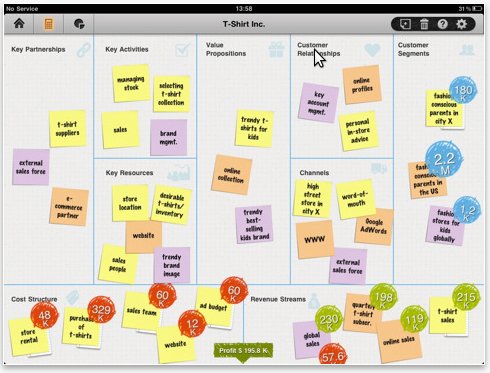
A well known visual narrative example (although there is not really a beginning, plot or ending) is this (mis)management story from projectcartoon:
What is really interesting, is the option to create your own version of the story.
So, now we have seen some visual examples to be used in complicated or complex situation and support decision making. Are these really useful in group interaction?
After watching this episode of Goudzoekers (‘golddiggers’), I learned about Bent Flyvbjerg, a researcher in cost overruns and benefit shortfalls at Oxford University, who offers two reasons for major estimates (dutch: ‘kostenoverschrijding’) in construction projects: (1) human optimism & (2) deliberate misinterpretation/misrepresentation (aka lying).
Knowing that during negotiations in complex situations neither group will be sincere about the intention, because of the unspoken interests of each group or of an individual within that group, it is still questionable that visualizations will help and reduce the ‘leak of energy‘. Both in the short and long run, the individual gains and need for control make people play it pretty close to the chest.
It seems that we talk too much, or at least a lot and most of the times not anout the right stuff: our interests or intentions. In complex situations -where cooperation and competition are in delicate balance- we tend to go around the subject, whether we do this intentionally (because of hidden interests) or not (because of the lack of analytical and communicative capacity). Or perhaps both…
In my proposal I mention ‘whether unexpected, seemingly random and emotionally disturbing developments can improve the cooperation of the whole’. It would be interesting to find out (a) if visualizing ‘hidden interests’ makes a group lower its ‘lack of capacity’ and (b) if visualizing ‘lack of capacity’ enables groups to extract ‘hidden interests’.
Although the examples above are more or less content driven, the balance between complexity and cooperation is also about intention. About a ambition and loyalty. About personal motives close to the chest. About trying to make people explain these motives. About trying to become more effective.
@ creative applications an inspriing article about the difference being responsive and interactive.
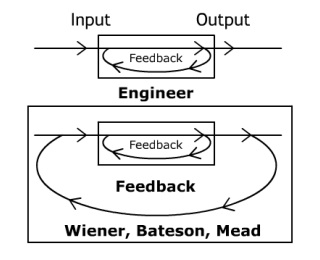
Be sure to browse the contempory software examples at creative applications! For example this one, asking me why focus research on visuals, and not tangibles?
Neither in Sketching at work, nor in A periodic table of visual methods I can find a relation with the Feynman Diagram:
@Xner, if you’re out there, please enlighten me!
NRC Weekend, zaterdag 14 mei & zondag 15 mei, 2011. Tekst: Gijsbert van Es.
… ex-astronaut Wubbo … hoogleraar in Delft: “voor mij is de oogsttijd aangebroken”.
… “binnen een half jaar had ik een consortium gevormd… we presenteerden een plan… wat was de reactie? Het is een integraal plan en dus: te ingewikkeld. Niet eens te duur, nee: te complex.
Want veiligheid: daarover gaat Rijkswaterstaat. Energie: dat is van Economische Zaken. Duurzame energie: weer een ander clubje amtenaren. Natuur, recreatie: idem.
In Nederland heerst bestuurlijk onvermogen om grootse projecten te managen.”
Spot on, Wubbo! Except for the fact that (1) most civil servants and most decision makers don’t like having a target on their heads and (2) if government can’t manage big complex projects, perhaps the question is ‘What exactly withholds such a consortium to find a public (or private) project owner?’ … of course, if more organisations feeel related to an issue, less organisations feel fully responsible.
Could it be that public decision makers have different agenda’s which they balance as a zero-sum game for the group and a win-or-loose game for individual, personal careers and more intimate group relations?
…”Dit kan ook weer zo’n geweldig export product zijn. Maar net als bij de Superbus kost het me een hoop energie om het bedrijfsleven hiervoor te interesseren.
Wij Nederlanders zijn een volk van koopmannen. Wij handelen het liefst in bestaand spul – lekker veilig. Onze handelsgeest zit onze innovatiekracht in de weg”
… “Hier in Delft heerst de sfeer die W.F. Hermans beschrijft in ‘Onder professoren’. Jaloezie, trucjes, achterklap.
Het probleem zit niet zozeer aan de top. Met het collega van bestuur heb ik een uitstekende relatie.Met de collega-hoogleraren loopt het meestal ook wel.…De stagnatie zit op het niveau daar onder en bij de ondersteunende diensten. … De bureaucratie moet op het geld, contracten en andere regeltjes letten en is dus per definitie gericht op beheren en beheersen.
In de cultuur van een universiteit is dat volledig doorgeslagen: ondersteunende diensten zijn aandacht vragende en energie vretende diensten. Ik zal er nooit aan wennen.”
Wow.
It seems that we can add an additional dimension perpendicular to cooperation and competition: direct vs long term impact.
I mostly agree with Wubbo. I do believe we need to develop something to better guide decision makers in complex situations.
What’s in the breathing gap in between comfort zone and no-go area’s? Interactive visual feedback.
In his lecture ‘Introduction of group dynamics‘ of Forsyth’s Group Dynamics Page (University of Richmond), he suggests two dimensions: conflict vs cooperation & conceptual vs behavioral:
McGrath’s Taxonomy of Group Tasks is based on 2 key dimensions: Choosing vs. Executing (Doing) and Generating vs. Negotiating
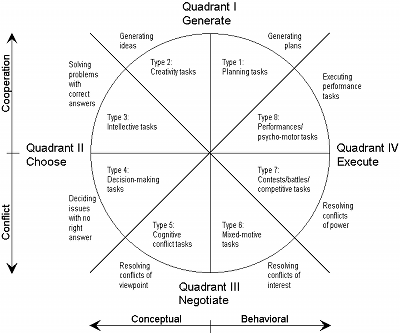
If complete, we should be able to map these tasks/dimensions onto daily used ones…
Let’s compare this with the operational/tactical PDCA cycle. Assuming there is a relation with a plan-do-check-act cycle, McGrath’s dimensions could be mapped into the PDCA cycle as generate-execute-negotiate-choose. This assumption would indicate that decision making is not behaviorial at all and is always conceptual.
Let’s abandon the previous exercize and take the strategic OODA loop into account: observe-orient-decide-act. McGrath’s dimensions could be mapped into the OODA cycle as … Well it can’t. There is no task defined which could be translated into ‘observe’. Let’s cheat, just to complete this exercise: x-negotiate-choose-execute.
Of course, models are models and not reality. We cannot really integrate them, although that leads to another question: what if we were not able to stretch our internalized, favorite models when working in complex situations?